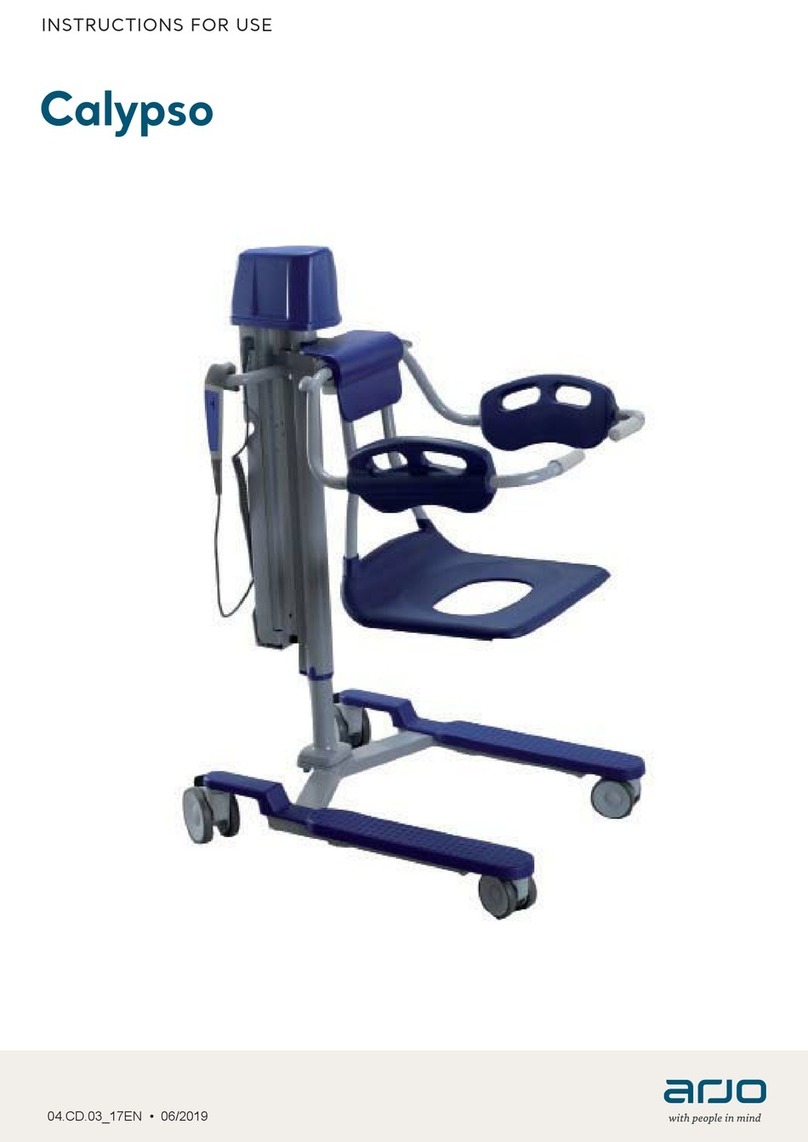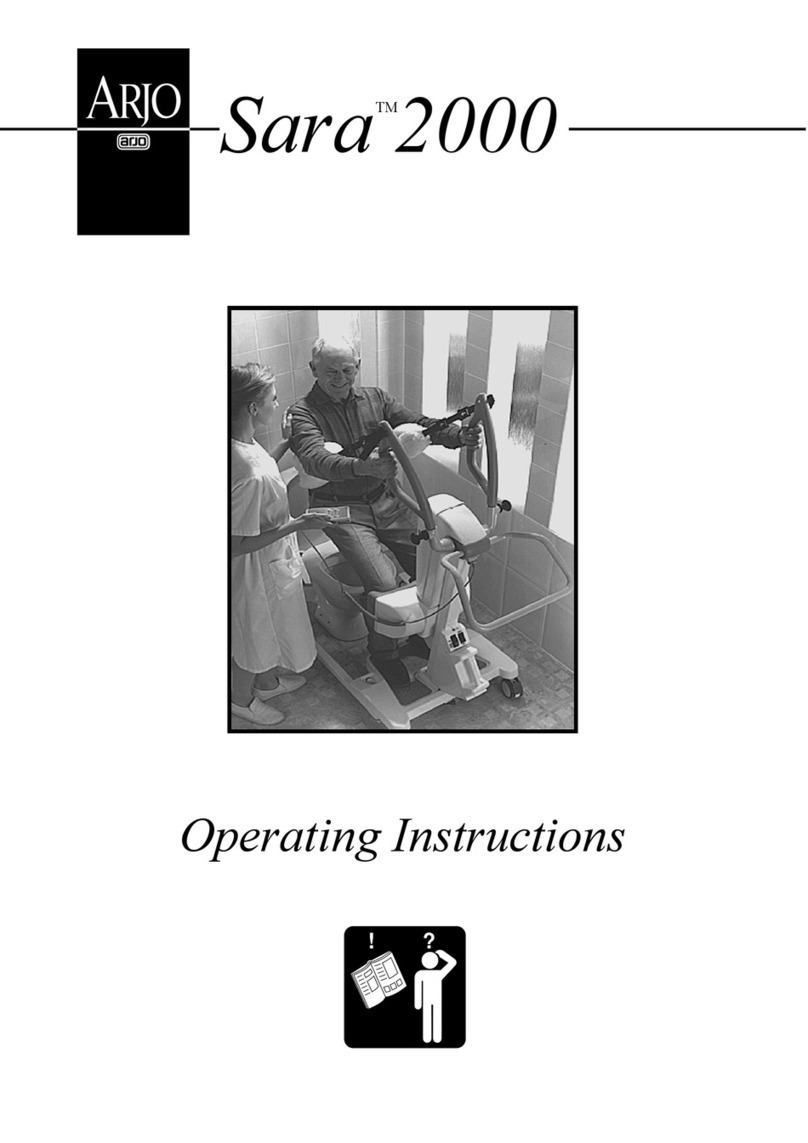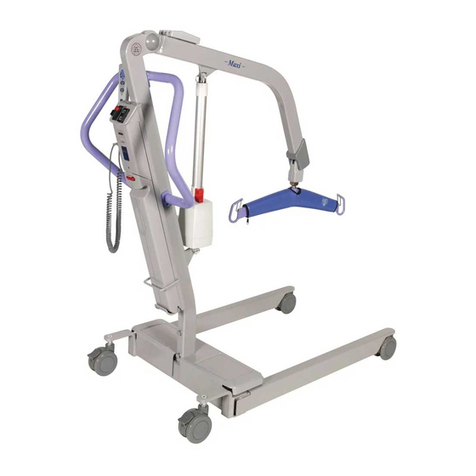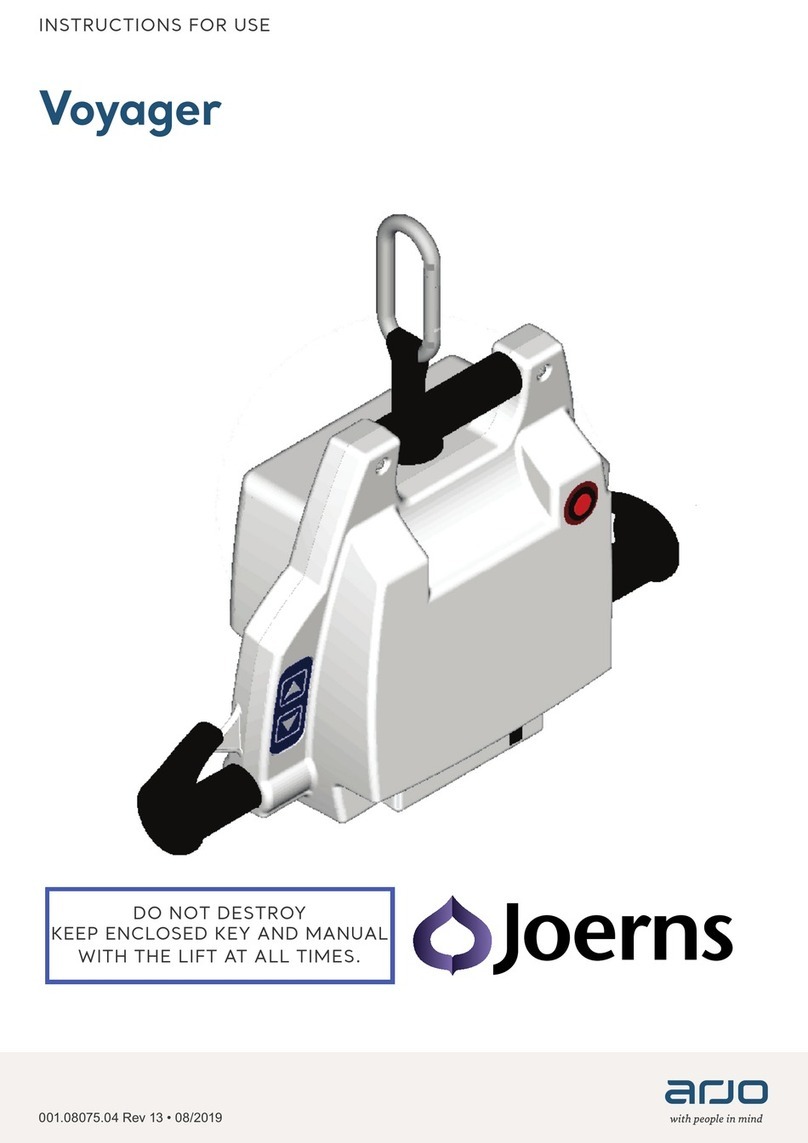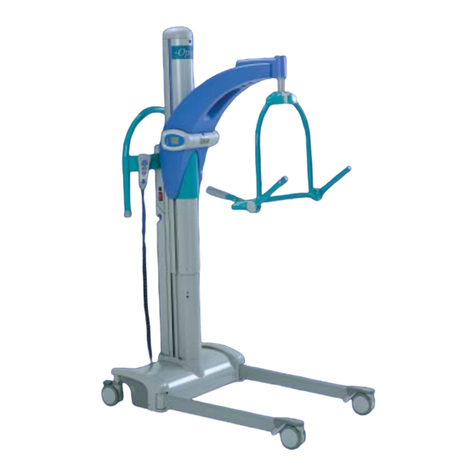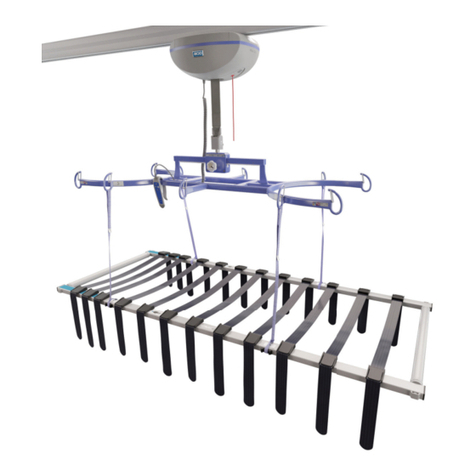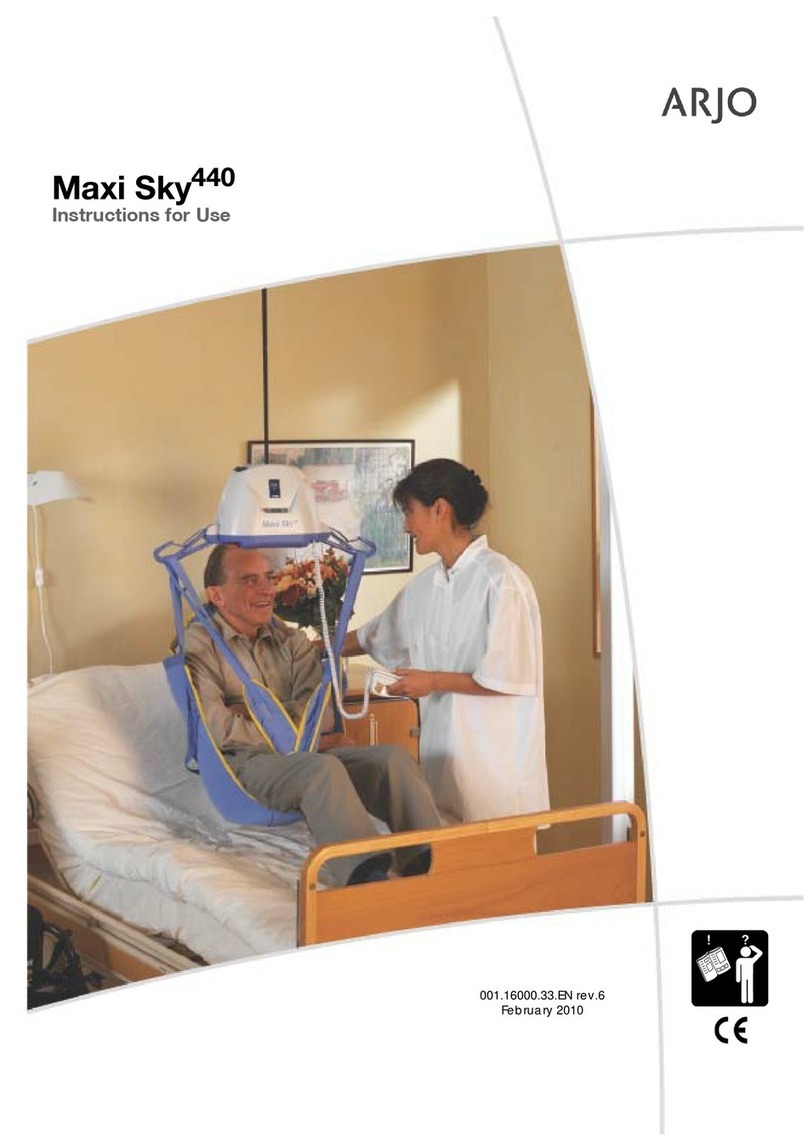
3
Safety instructions
READ BEFORE USE
Before using your Te n o r , familiarise yourself with
the various parts and controls as illustrated in this
document. Read this whole manual thoroughly
before operating your Te n o r in order to prevent
injury or damage to the product.
Symbols and definitions used in this manual:
INTENDED USE
Te n o r is a mobile passive lift, intended to be used on
horizontal surfaces for lifting and transfer in hospi-
tals, nursing homes or other health care facilities.
To describe which residents may be lifted using an
Arjo hoist, a resident gallery has been created by
Arjo. The residents that can be transferred with a
Te n o r have been named Doris (D) and Emma (E).
Te n o r has been designed to lift Doris, who:
• Sits in wheelchair
• Has no capacity to support herself at all
• Cannot stand unsupported and is not able to bear
weight, not even partially
• Is dependent on carer in most situations
Te n o r has been designed to lift Emma, who:
• Is a passive resident
• Might be almost completely bed ridden
• Is often stiff and has contracted joints
• Is totally dependent
SERIOUS INCIDENT
If a serious incident occurs in relation to this medical
device, affecting the user, or the patient then the user
or patient should report the serious incident to the
medical device manufacturer or the distributor. In the
European Union, the user should also report the
serious incident to the Competent Authority in the
member state where they are located.
This equipment shall always be handled by a trained
caregiver and in accordance with the instructions
outlined in this Instruction for Use. Te n o r should
only be used for the purpose specified in this
Instructions for Use. Any other use is prohibited.
OPERATIONAL LIFE
Unless stated otherwise, the operational life of the
Te n o r is ten (10) years, as long as the required
preventive maintenance is carried out in accordance
with the care and maintenance instructions in this
user manual. The Te n o r will not be suitable for use if
it is damaged.
The operational life of the sling and of the consum-
able parts e.g. batteries, depends on the actual use
conditions. Therefore, before use, always make sure
that the sling, loops, cords and straps do not show
any sign of fraying, tearing or other damage and
that there is no damage (e.g. cracking, bending,
breaking) to the attachment clips. If any such
damage is observed, do no use the sling.
The scale (if fitted) has been designed to weigh resi-
dents.
CAUTION
Failure to follow these instructions
may cause damage to the product.
WARNING
Failure to follow these instructions
may result in injury to yourself or to
others.
WARNING
When using the Tenor, only use the
slings as described in the list on
the next page.
WARNING
Do not overload the Te n o r beyond the
approved maximum lifting capacity (Safe
Working Load) of 320 kg
(705 lbs).
CAUTION
Although manufactured to a high
standard, the Tenor and accessories
should not be left for extended periods in
humid or wet areas.
Do not, under any circumstances, spray
the Te n o r or accessories (excluding
sling) with water e.g. under the shower.


















